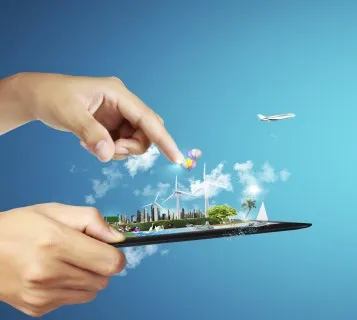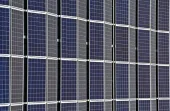
Doubts are cast over Malaysia's ambitious renewables targets
Not everyone is convinced with the government’s target of 1,000MW renewable grid-connected capacity by 2020.
When the 10th Malaysia Plan was first implemented in 2011, it aimed to allocate the national budget to all of the major economic sectors of the country until 2015. As a result of effective planning, Malaysia has shown marked improvement in practically all sectors, particularly in the effective sourcing and delivery of energy – for instance, electricity generation has increased by over 5,000 MW and electricity coverage in the rural areas has grown to roughly 98%, from 93% in 2010.
The focus on energy development was mainly placed on diversifying energy sources and investment in new technology and infrastructure in order to meet Malaysia’s growing demand in a sustainable manner. At the same time, the country undertook to ensure efficient utilisation of their resources, which included taking measures to improve productivity in the process.
Efficiency of electricity supply
The increase in generation capacity was brought about by commissioning ten power plants, with various energy sources including hydropower and gas. In remote rural areas, alternative smaller systems such as solar hybrid and biomass were also utilised apart from connection to the country’s main grid. The efficiency of electricity supply services has increased significantly and the number of power interruption occurrences are also lower. However, with Malaysia targeting more sustainable energy use in the long term, they must reduce their dependence on fossil fuels as a main source of power by exploring alternative environmentally-friendly power sources.
“The mainstay of the generation fuel mix will continue to be conventional fossil fuels, e.g. coal and gas. Gas is now even being imported as LNG for use in power plants. Clean energy sources will, for a long time, only be seen to complement fossil fuels and hydro, and not become a significant component of the fuel mix,” says Ir. Andrew Amaladoss, general manager of Tawau Green Energy of the struggle to increase energy productivity with clean energy sources. “Challenges include the mismatch between the location of the grid and green energy resources such as biomass, biogas and hydro.”
In the total generation fuel mix, coal is expected to increase in terms of its current ratio to natural gas, leading to a significant increase in coal consumption for Malaysia in the near future. Unfortunately, in the near term, the country looks set for even more coal, in an effort to maintain electricity prices as the gas fuel subsidy is gradually reduced,” says Dr Ali Askar Sher Mohamad, MD at Sher Engineering & Consultancy and former chief operating officer of Sustainable Energy Development Authority (SEDA) Malaysia.
A secure energy supply is one of the primary underpinnings of economic growth – in Malaysia, it would enable the country not only to move forward as an economy, but to raise their citizens’ standards of living. For this reason, the energy sector is one of the main components for development in the Eleventh Malaysia Plan to be implemented this 2016-2020, which includes comprehensive governance and a communication plan to improve good governance and public awareness on energy developments.
Part of this plan also entails a continuation of the earlier developments on improvement of productivity by ensuring that there is a secure and reliable supply of natural gas, as well as further research on its safe and efficient distribution, particularly in the rural areas. In order to reduce distortion of market energy prices, sustained efforts will be carried out to decrease and gradually remove energy subsidies.
By removing these subsidies, growth in the oil and gas subsector is also imminent – a means of ensuring fair competition in the gas supply market will be implemented to encourage new entrants to contend with Petronas, which is currently Malaysia’s sole gas supplier. This is in conjunction with plans to develop technology that will greatly increase the country’s oil refining capacity, to which third party gas suppliers will have access, with the enforcement of the amended Gas Supply Act 1993 (Act 501) in 2016.
Renewable energy
One of the most heavily-debated strategies in place for the future is the assessment and application of the clean and green alternative to Malaysia’s fossil fuel concerns; renewable energy (RE). This was first introduced in the form of the Renewable Energy Act in 2011, and with it, the Feed-in Tariff (FiT), as part of the country’s movement to explore new sources of clean energy. Under the FiT, SEDA expects to achieve at least 1000 MW of installed renewable grid-connected capacity by 2020 as part of several initiatives to be applied by the government that are currently under development, one of which is net energy metering.
Not everyone is convinced by the argument for RE, however – there are challenges to be faced in introducing new sources of energy to the country, as it poses several difficulties in terms of environmental sustainability. It also involves enormous investment, not only in terms of finances and infrastructure, but also the extensive amount of time involved in researching and developing the required technology.
“The government needs to identify the correct renewable energy resource that suits Malaysia and encourage the industry players to develop the necessary technologies locally where possible,” says Piarapakaran S., president of the Association of Water and Energy Research Malaysia (AWER). “Currently, Malaysia is not the technology owner for many RE technologies. We mainly ‘buy and use’ these technologies which will increase the cost of developing RE in Malaysia. Eventually, the consumers have to bear this additional cost via the electricity tariff. Besides this, the Malaysian government needs also to protect our rainforests to ensure the long term sustainability of our mini hydro and large scale hydroelectric projects.”
A sizeable number of residents and authorities alike are also wary of the introduction of nuclear energy as one of the renewable energy options being explored, despite the strong enthusiasm for its implementation in 2011. An independent atomic energy regulatory commission will be established in preparation for the project.
Challenges
One of the foremost challenges includes educating public sentiment: the majority of Malaysian citizens are not confident in the idea of building a local nuclear power plant, and especially not if it is within their residential zone, based on the National Energy Security Survey (NESS) conducted by AWER. While plans to explore nuclear power as a potential energy source are still in place, Malaysia still has several more years to go before their research is completed, not to mention applied – perhaps by then the results will be more reassuring.
“I personally believe that nuclear is the way forward for Malaysia to cut its dependency on imported fuels… more effort needs to be put into public awareness and the conceptualising of nuclear in the generation mix,” says Amaladoss, emphasising that while confidence in the project is currently very low, the current public mind-set may be changed if it is properly informed and provided with adequate data on its development.
The exploration into renewable energy sources will allow Malaysia to strike the optimum balance in fuel mix, which aims to gradually decrease the ratio of fossil fuels and to substantially increase clean energy sources. To reduce their country’s carbon footprint, top-of-the-line emission control technologies will also be used to ensure that future power plants are not negatively affecting the environment. This is particularly relevant in light of the fact that coal constitutes a considerable percentage of their current fuel mix, and will only increase further in the short-term future.
Incentive based regulation
Continuing the Incentive Based Regulation (IBR) is also part of Malaysia’s plans for the next few years, this time by restructuring the current model to further incentivise efficiency gains by the utility. Greater transparency yields greater efficiency in the new model, as well as being more financially stable, in turn benefiting Malaysian consumers and enabling overall economic growth.
In the past few years, the Tenth Malaysia Plan focussed on expanding their infrastructure network in all economic sectors to improve accessibility and overall quality of life. In the Eleventh Malaysia Plan, further investment in the developing infrastructure will be made to increase productivity and efficiency.



















 Advertise
Advertise






